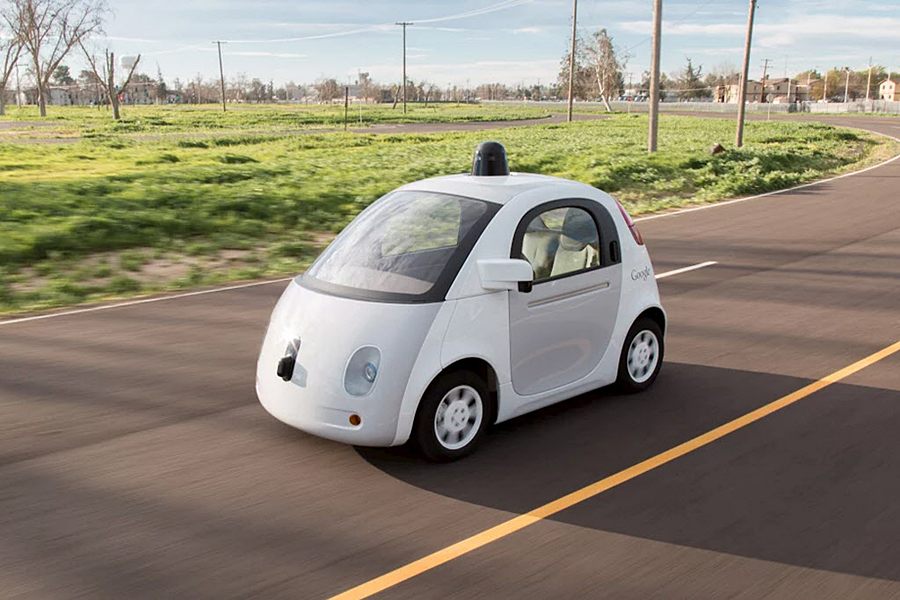Google is teaching its self-driving cars to share the road with cyclists
Loading...
Google’s self-driving car may be able to share the road with cyclists better than you could.
With a 360-degree view of its surroundings, the vehicle can recognize cyclists’ hand signals, provide them with the perfect amount of buffer room when driving alongside them or passing them, and can even identify bikes of all different shapes and sizes, Google said in its June report on its self-driving car project.
As the number of cyclists commuting and riding for fun increases, Google’s software update shows it has started to address concerns about not only pedestrian safety, but also bicycle safety.
“Our cars recognize cyclists as unique users of the road, and are taught to drive conservatively around them,” writes Google. “It helps to have a number of avid cyclists on our engineering team.”
The report acknowledges the difficulty cyclists present to both autonomous vehicles and human drivers.
“Cyclists are fast and agile – sometimes moving as quickly as cars,” the report notes. “That also means that it’s hard for others to anticipate their movements.”
Cyclists present challenges to any driver, and today, there are more two-wheeled travelers than ever. From 2008 to 2012, there were 786,000 Americans who commuted to work by bicycle, up from about 488,000, as USA Today reported. The difference from 1990 to 2013 was even greater, according to the League of American Bicyclists: in Washington D.C., the number of bike commuters increased by 498 percent. In Portland, Oregon it increased by 408 percent. In Chicago, it increased by 389 percent.
And with more cyclists have come more accidents. The number of cyclists injured in traffic accidents has increased since 2001, according to the National Highway Traffic Safety Administration. The number of cyclist injuries went up 11.1 percent from 2001 to 2014, from 45,000 to 50,000. However, the number of fatalities decreased slightly during that time, from 732 to 726.
As the idea of a future with autonomous vehicles has generated more buzz, cyclists have wondered if the cars would be programmed with them in mind.
"The nightmare scenario is that self-driving cars are implemented in a way that ignores the lessons of the past and creates a new era of roads created with only one user in mind:" drivers, Ken McLeod, the League of American Bicyclists’ legal and policy specialist, told The Daily Beast in November. "No-win scenarios are likely to be less common than the crashes that currently cause, on average, 700 bicyclist deaths each year, but our goal should be no deaths."
Google’s report indicates it is developing its autonomous vehicles with cyclists in mind, addressing dangers cars commonly pose to cyclists. One predicament is when a car drives alongside a cyclist or passes it. If Google's self-driving vehicle senses a parked vehicle with an open door, it will slow down or nudge over to provide the cyclist with more room. This comes as a female cyclist in Cambridge, Mass., was killed in June when the open door of a Jeep pushed her into the path of a landscaping truck.
A Google autonomous vehicle, when passing a cyclist, will also provide the cyclist with enough buffer room. “Whether the road is too narrow or they’re making a turn, we respect this indication that cyclists wants to claim their lane,” writes Google.
It has also taught its software to recognize common riding behaviors such as hand signals. The software can even remember a cyclist’s previous hand signals, so it can recognize them further down the road, which Mr. McLeod said could improve interactions between drivers and cyclists in general.
There “is a need for new and better ways for bicyclists and cars to communicate. Right now bicyclists often rely upon eye contact or hand motions from drivers to tell them that the driver is yielding,” said McLeod. “Self-driving cars could benefit from visual indicators meant for bicyclists and pedestrians that help everyone know how the car will behave.”







